Mary Cronk Farrell's Blog, page 13
September 12, 2015
Daring Women of the American Revolution
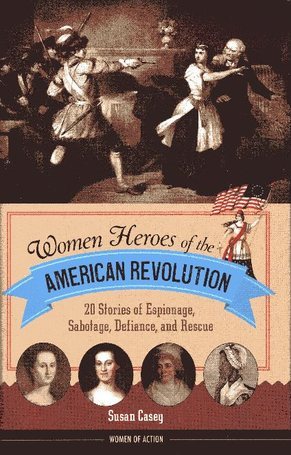 I think of myself as a history buff, so I am a bit embarrassed to admit that I never gave much thought to womens' contributions to the American Revolution.
I think of myself as a history buff, so I am a bit embarrassed to admit that I never gave much thought to womens' contributions to the American Revolution.Not until I read the new book Women Heroes of the American Revolution: 20 Stories of Espionage, Sabotage, Defiance, and Rescue.
Rich, poor, beautiful, plain, city women and farm wives, all ages, even teenage girls helped in the cause of liberty.
These women did not hesitate, but acted with bravery and resourcefulness, sharing whatever resources and skills they possessed in the fight for independence, often risking their lives, fortunes and “sacred honor” just as the men did.
Today I've invited Author Susan Casey to tell us about some of those brave women.
Nearly every American knows about Paul Revere and his ride to warn the Continental Army. Why don't we know about 16-year-old Sybil Ludington?
Sybil rode twice as far as Paul Revere, roughly 40 miles to muster the troops of her father's militia, alerting them to join her father to join the other forces fighting against the British during the Battle of Danbury.

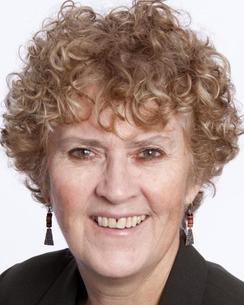 Author Susan Casey As I delved into the lives of the women featured in my book I felt pulled into their stories, into a process of not only gathering facts but also trying to understand who they were and what motivated them.
Author Susan Casey As I delved into the lives of the women featured in my book I felt pulled into their stories, into a process of not only gathering facts but also trying to understand who they were and what motivated them. I wondered about the feelings of Sybil Ludington, as she rode her horse though the dead of night.
What was she thinking about?
Was she scared?
I was frustrated by the lack of information about her and many others but no less curious. I wanted to know more about what prompted Lydia Darragh to walk miles to warn George Washington of an impending attack without telling anyone, including her husband.
Many of their stories were single incidents.
I wondered what the rest of their lives were like.
For example, while I found many books featuring the story of Prudence Wright as leader of the Pitchfork Brigade I was captivated to find that besides being able to organize an ambush she excelled in the art of sand scouring, a way of cleaning and also creating patterns on her wooden floor.
Discovering that fact made her come alive for me and gave me a window into a small aspect of life in another era. Days after shots were fired at Lexington and Concord setting off the American Revolution, Prudence Wright organized the women of her town of Pepperell, Massachusetts to waylay couriers taking plans to the British.
Dressed in their husband's clothing and armed with pitchforks, the women surprised the men. To Prudence's dismay one of the couriers was her own brother.
 Betty Zane was only sixteen in 1782 when she fought with only a few dozen other settlers to defend Fort Henry, a frontier village in what is now West Virginia.
Betty Zane was only sixteen in 1782 when she fought with only a few dozen other settlers to defend Fort Henry, a frontier village in what is now West Virginia. The British and their Native American allies would have won the conflict if Betty had not run across the battlefield and retrieved much needed gunpowder from a nearby cabin.
When she ran back across the field arrows and shots flew past her, some ripping through her petticoat. She safely slid through the doors of the fort making possible a win for the Americans in one of the last battles of the American Revolution.
As I researched and wrote about these women, I felt as though I was living with twenty plus roommates. I was as involved in their lives as in the lives of people I actually know. In the months since I finished the book I find myself missing the women and searching for ways to visit them again.
Thank you, Susan! I felt much the same way about the WWII Nurses I wrote about in Pure Grit.
I enjoyed reading Susan's book, which you can buy here... Women Heroes of the American Revolution. Find more about Susan Casey here...
Published on September 12, 2015 14:23
August 22, 2015
Picture Queen Elizabeth with a Grease Rag and a Wrench
I'm deep in research about some of the most brutal aspects of WWII, so it's a nice break mark the 70th Anniversary of the war's end.
Japan's Emperor Akihito expressed "deep remorse" for his nation's wartime behavior during a brief ceremony in Tokyo. More here...
Here's a bit of World War II trivia that brought a smile to my face.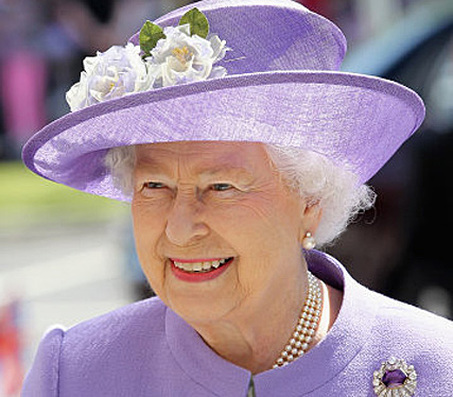 Apparently, a particular young woman had been arguing with her father some quite a number of months. Like any young English woman of the time, she wanted to do her part to help win the war.
Apparently, a particular young woman had been arguing with her father some quite a number of months. Like any young English woman of the time, she wanted to do her part to help win the war.
But like many a father, King George VI was slow to come around.
It was February 1945 when the princess got her way.
 2nd Lieutenant Elizabeth Windsor served in the British Auxiliary Territorial Service, or ATS, which recruited women to free up men for combat.
2nd Lieutenant Elizabeth Windsor served in the British Auxiliary Territorial Service, or ATS, which recruited women to free up men for combat.
Mary Churchill, the youngest daughter of the Prime Minister Winston Churchill also served in the ATS. The women worked as telephonists, drivers, mess orderlies, butchers, bakers, postal workers, ammunition inspectors and military police.
Over 200-thousand women served in the ATS, 335 were killed during the war.
 Princess Elizabeth trained to be a truck driver and mechanic. Other women held positions in the Anti-Aircraft Command of the Royal Artillery finding enemy aircraft and controlling the direction of the gun, although officially they never fired the guns. Others operated searchlights.
Princess Elizabeth trained to be a truck driver and mechanic. Other women held positions in the Anti-Aircraft Command of the Royal Artillery finding enemy aircraft and controlling the direction of the gun, although officially they never fired the guns. Others operated searchlights.
Think she's checking the oil or the spark plugs? Maybe the fan belt?
Japan's Emperor Akihito expressed "deep remorse" for his nation's wartime behavior during a brief ceremony in Tokyo. More here...
Here's a bit of World War II trivia that brought a smile to my face.
 Apparently, a particular young woman had been arguing with her father some quite a number of months. Like any young English woman of the time, she wanted to do her part to help win the war.
Apparently, a particular young woman had been arguing with her father some quite a number of months. Like any young English woman of the time, she wanted to do her part to help win the war.But like many a father, King George VI was slow to come around.
It was February 1945 when the princess got her way.
 2nd Lieutenant Elizabeth Windsor served in the British Auxiliary Territorial Service, or ATS, which recruited women to free up men for combat.
2nd Lieutenant Elizabeth Windsor served in the British Auxiliary Territorial Service, or ATS, which recruited women to free up men for combat.Mary Churchill, the youngest daughter of the Prime Minister Winston Churchill also served in the ATS. The women worked as telephonists, drivers, mess orderlies, butchers, bakers, postal workers, ammunition inspectors and military police.
Over 200-thousand women served in the ATS, 335 were killed during the war.
 Princess Elizabeth trained to be a truck driver and mechanic. Other women held positions in the Anti-Aircraft Command of the Royal Artillery finding enemy aircraft and controlling the direction of the gun, although officially they never fired the guns. Others operated searchlights.
Princess Elizabeth trained to be a truck driver and mechanic. Other women held positions in the Anti-Aircraft Command of the Royal Artillery finding enemy aircraft and controlling the direction of the gun, although officially they never fired the guns. Others operated searchlights.Think she's checking the oil or the spark plugs? Maybe the fan belt?
Published on August 22, 2015 09:59
July 24, 2015
Woman Who Took Neil Armstrong to the Moon Called "Tiny Girl, with Long Blond Hair"
 Neil Armstrong's small step and humankind's large one was brought to you by....ta-dah!
A woman.
Neil Armstrong's small step and humankind's large one was brought to you by....ta-dah!
A woman.
Yep. Her name was Margaret Hamilton, and without her brains (yes, blonds are smart) the lunar landing might have been aborted.
This past week, forty-four years ago, alarm bells went off on Apollo 11's on-board computers shortly before the scheduled lunar landing. Well, back in 1969, when women got coffee for the boss, thank God, they also wrote code.
 Apollo 11 first step - NASA Margaret not only headed the MIT team that programmed Apollo 11's computers, she made certain the software was rigorously tested.
Apollo 11 first step - NASA Margaret not only headed the MIT team that programmed Apollo 11's computers, she made certain the software was rigorously tested. “I remember thinking, Oh my God, it worked,” the pioneering software engineer told TIME for a copyrighted article out this week. “I was so happy. But I was more happy about it working than about the fact that we landed.”
Prior to Armstrong's step on the moon, the computer was processing superfluous information leaving too little room on to run the landing software. But the testing Margaret had done prior to blast off, paid off. The computer had been programmed to solve the problem itself.
 “It got rid of the lesser priority jobs and kept the higher priority jobs, which included the landing functions,” Margaret told TIME.
“It got rid of the lesser priority jobs and kept the higher priority jobs, which included the landing functions,” Margaret told TIME.Margaret received little attention for her work in 1969, but NASA did award her the Exceptional Space Act Award.
Some of the news coverage she did receive highlights the male chauvinism of the times. One reporter called the 31-year-old woman a "tiny girl with long blond hair." See more here...
Thanks to Jessie Stickgold-Sarah for the photo and bringing this issue to the forefront on her blog .
Great post here from the Columbia Journalism Review on the gender gap in the sciences. Is the news media helping or hindering?
Compare the 1969 headline with the one below from July 20, 2015.
Margaret Hamilton continues her work in computer engineering today, and thing may have improved in general for women since 1969, but in the sciences there are still far fewer women than men in research jobs, and those women earn substantially less than their male counterparts.
 You can see this 2015 article by Dylan Matthews here...
You can see this 2015 article by Dylan Matthews here... Margaret first used a term we all take for granted today. "I began to use the term 'software engineering' to distinguish it from hardware and other kinds of engineering," Hamilton told Verne's Jaime Rubio Hancock in an interview.
"When I first started using this phrase, it was considered to be quite amusing. It was an ongoing joke for a long time. They liked to kid me about my radical ideas. Software eventually and necessarily gained the same respect as any other discipline."
Code was originally considered women's work because it required a lot of typing like a clerical job. Boys are writing much more code today, than girls. Check out this movement Girls Who Code and make sure the girls in your life know about it.
Published on July 24, 2015 09:24
July 2, 2015
Celebrate the 4th Reflecting on True Freedom
 Now's the 3-day weekend to reflect on freedom.
Now's the 3-day weekend to reflect on freedom.Any American school child can tell you freedom is essentially the right to do what you want. Born in America and you're born with the right to life, liberty and the pursuit of happiness.Despite our Bill of Rights, growing list of amendments and civil protections, how many moments of the day do we find ourselves wanting something more, or something different? Not able to capture the happiness we pursue?
We experience true freedom when our fears and desires fall away, allowing us a clear view. True freedom allows us to open our hearts without counting the cost.
Ponder for a moment,
how might
true freedom look?
Clear sight plus compassion equals freedom, the freedom to act with courage upon what really matters.
Nicholas Winton was a man who put skin on those somewhat nebulous and high-minded ideals. was a successful stockbroker living the good life. Like many others around the world, in 1938 he read in the newspaper about Nazis persecution of Jews.
After the Munich agreement, when the Nazi’s marched into Czechoslovakia, Nicholas read about the thousands of families fleeing to Prague in hopes of escaping.
 He took a two week vacation from his job and home in London and went to Prague to see if he could help.
He took a two week vacation from his job and home in London and went to Prague to see if he could help.The children were especially vulnerable. “I went out into the camps where the people had been put who had been displaced and it was winter and it was cold.” Nicholas Winton rented a hotel room and started figuring out a way to get the children out.
But nobody
wanted them.
Winton tried to get the Americans to take some of the children, but our doors were closed. An embassy letter told him, “…United States Government is unable…” to help.
Finally, the British said the kids could come to England if families would agree to take them in. While the travel documents stalled in government bureaucracy...
prisoners at Dachau were forced to build a large complex of buildings to upgrade the concentration camp in preparation for large numbers of prisoners.
 Dachau Prisoners' barracks built in 1938, shown in 1945.
Dachau Prisoners' barracks built in 1938, shown in 1945.Nicholas Winton's small volunteer organization started to forge documents, bribe and blackmail. His motto: “If something’s not impossible, there must be a way of doing it.”
A train carried away the first 20 children the day before Nazi’s marched into Prague and Adolf Hilter stood in an open vehicle touring the city and waving to the crowds. Nicholas kept at it.
Over six-hundred children on seven trains journeyed across Nazi Germany to Holland, where they caught a ferry to England. Nicholas had an eighth train loaded with 250 children and scheduled to leave September 8th when the war in Europe started.
About 88,000 Czech Jews were deported to Auschwitz and other extermination camps. In 1945, some 15,000 children were found living in the children's home inside Auschwitz, only 93 of those children survived.
 "Nicholas Winton in Prague" With thanks to Li-sung - Self-photographed. Licensed under CC BY-SA 3.0 via Wikimedia Commons -Sir Nicholas Winton, died this past week at age 106. He kept silent for 50-years about how he saved hundreds of children from Nazi genocide.
"Nicholas Winton in Prague" With thanks to Li-sung - Self-photographed. Licensed under CC BY-SA 3.0 via Wikimedia Commons -Sir Nicholas Winton, died this past week at age 106. He kept silent for 50-years about how he saved hundreds of children from Nazi genocide. Hindsight, it's tempting to think we might have seen clearly what the Nazis were doing. We might have had the compassion to try and help. We might have been free from our fears, our plans, our wants, free enough to widen the net of our responsibilities and act with moral courage.
He kept silent
for fifty years
But listen to this.
Nicholas explained he never talked much about what he did in 1938 because "...there's too much emphasis on the past...nobody is concentrating on the present and the future."
To fully concentrate on the present and the future, we must find our way to freedom, true freedom. Add your two cents below...
Published on July 02, 2015 21:46
June 18, 2015
The Courage to become Infatuated with a Wild & Visionary Enterprise
Our history rises up to smite us.
The killings at Emanuel African Methodist Episcopal Church appear to be directly connected to efforts of black people in this county to gain freedom from slavery and to enjoy equal treatment and opportunity.
Consider the words of the founder of this very church before he was hanged on charges of attempted insurrection in 1822.
 Denmark Vessy, a former slave who'd purchased his freedom, had an opportunity to move to Africa.
Denmark Vessy, a former slave who'd purchased his freedom, had an opportunity to move to Africa.
He had a chance to turn his back on slavery in America and go on with his life in peace.
He stayed in South Carolina and was accused of plotting the most elaborate American slave uprising ever, it may have involved five-thousand slaves, which greatly outnumbered whites in the Charleston area.
A co-conspirator gave evidence as to Vesey's motive. “...he was satisfied with his own condition, being free, but, as all his children were slaves, he wished to see what could be done for them."
Vesey was found guilty in a secret trial on the testimony of witnesses who had been tortured. When their sentence to death was passed, it read in part...
“It is difficult to imagine what infatuation could have prompted you to attempt an enterprise so wild and visionary. You were a free man, comely, wealthy, and enjoyed every comfort compatible with your situation. You had, therefore, much to risk and little to gain. Is slavery, then, a thing so intrinsically detestable, that a man thus favored will engage in a plan thus desperate merely to rescue his children from it?”
Vesey and 35 slaves were executed. The church Vesey founded was burned to the ground and authorities in Charleston cracked down on slaves with increased cruelty.
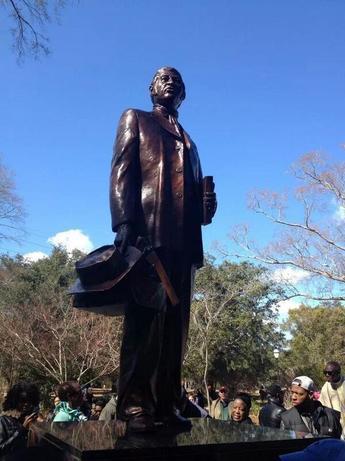 Denmark Vesey Memorial, Charleston, S.C.It would be easy to conclude the story of this latest shooting with the arrest and conviction of the one young man who pulled the trigger.
Denmark Vesey Memorial, Charleston, S.C.It would be easy to conclude the story of this latest shooting with the arrest and conviction of the one young man who pulled the trigger.
But Dyylan Roof is but a single thread in the tapestry of our collective mindset, and the pattern of his thinking is directly related to the thinking of the men who sentenced Vesey. And that pattern continues to repeat itself in the weave of our communities.
This monument to Denmark Vesey unveiled just last year in Charleston was an effort to publicly erase the memory of him as a threat to white supremacy, and honor him as a champion of freedom and justice.
It's not far from the spot on Ashley Avenue where Vesey was hung from a tree...less than ten minutes from where a young black man, Tywanza Sanders, and eight others were massacred while gathered to pray.
 Tywanza Sanders Facebook photoI cannot help but ask Am I too satisfied with my own condition? Am I turning my back because I'm comfortable in my situation?
Tywanza Sanders Facebook photoI cannot help but ask Am I too satisfied with my own condition? Am I turning my back because I'm comfortable in my situation?
I have no ready answers, but we must have the conversation. If we want an end to violence, we must lay down our desire to be right, our political positions and our long believed stories.
Do I have the courage to become infatuated with a wild and visionary enterprise?
Do you?
The killings at Emanuel African Methodist Episcopal Church appear to be directly connected to efforts of black people in this county to gain freedom from slavery and to enjoy equal treatment and opportunity.
Consider the words of the founder of this very church before he was hanged on charges of attempted insurrection in 1822.
 Denmark Vessy, a former slave who'd purchased his freedom, had an opportunity to move to Africa.
Denmark Vessy, a former slave who'd purchased his freedom, had an opportunity to move to Africa.He had a chance to turn his back on slavery in America and go on with his life in peace.
He stayed in South Carolina and was accused of plotting the most elaborate American slave uprising ever, it may have involved five-thousand slaves, which greatly outnumbered whites in the Charleston area.
A co-conspirator gave evidence as to Vesey's motive. “...he was satisfied with his own condition, being free, but, as all his children were slaves, he wished to see what could be done for them."
Vesey was found guilty in a secret trial on the testimony of witnesses who had been tortured. When their sentence to death was passed, it read in part...
“It is difficult to imagine what infatuation could have prompted you to attempt an enterprise so wild and visionary. You were a free man, comely, wealthy, and enjoyed every comfort compatible with your situation. You had, therefore, much to risk and little to gain. Is slavery, then, a thing so intrinsically detestable, that a man thus favored will engage in a plan thus desperate merely to rescue his children from it?”
Vesey and 35 slaves were executed. The church Vesey founded was burned to the ground and authorities in Charleston cracked down on slaves with increased cruelty.
 Denmark Vesey Memorial, Charleston, S.C.It would be easy to conclude the story of this latest shooting with the arrest and conviction of the one young man who pulled the trigger.
Denmark Vesey Memorial, Charleston, S.C.It would be easy to conclude the story of this latest shooting with the arrest and conviction of the one young man who pulled the trigger. But Dyylan Roof is but a single thread in the tapestry of our collective mindset, and the pattern of his thinking is directly related to the thinking of the men who sentenced Vesey. And that pattern continues to repeat itself in the weave of our communities.
This monument to Denmark Vesey unveiled just last year in Charleston was an effort to publicly erase the memory of him as a threat to white supremacy, and honor him as a champion of freedom and justice.
It's not far from the spot on Ashley Avenue where Vesey was hung from a tree...less than ten minutes from where a young black man, Tywanza Sanders, and eight others were massacred while gathered to pray.
 Tywanza Sanders Facebook photoI cannot help but ask Am I too satisfied with my own condition? Am I turning my back because I'm comfortable in my situation?
Tywanza Sanders Facebook photoI cannot help but ask Am I too satisfied with my own condition? Am I turning my back because I'm comfortable in my situation? I have no ready answers, but we must have the conversation. If we want an end to violence, we must lay down our desire to be right, our political positions and our long believed stories.
Do I have the courage to become infatuated with a wild and visionary enterprise?
Do you?
Published on June 18, 2015 16:58
June 12, 2015
Eight Bloody Hours that Changed America Forever
If the Sand Creek Massacre is news to you, as it was to me, you need to know about this turning point in American History.
Warning: It's violent, gory and horrific, but one man had the courage to try to prevent the slaughter. And in that, I find hope.
The attack in Colorado Territory came at dawn November 29, 1864. Indian villagers likely heard the pounding hooves before they saw the hundreds of blue-clad cavalrymen.
 Artist Robert Lindneaux portrays his concept of the Sand Creek Massacre. Courtesty History Colorado #46619A Cheyenne chief raised the Stars and Stripes above his lodge. Others in the village of about 1000-people waved white flags. The troops responded with rifle and cannon fire.
Artist Robert Lindneaux portrays his concept of the Sand Creek Massacre. Courtesty History Colorado #46619A Cheyenne chief raised the Stars and Stripes above his lodge. Others in the village of about 1000-people waved white flags. The troops responded with rifle and cannon fire.
Witnesses say some two hundred people died, warriors trying to fight back with bows and arrows, others shot down as they tried to flee. Two-thirds of the dead and mutilated bodies left on the ground were women and children. Boasting of his victory Col. Chivington paraded the body parts of dead Cheyenne and Arapaho through the streets of Denver.
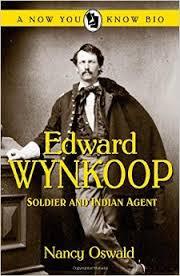 A new award-winning book tells how Edward Wynkoop risked his life to meet with hostile Indians and negotiate peace in Colorado Territory.
A new award-winning book tells how Edward Wynkoop risked his life to meet with hostile Indians and negotiate peace in Colorado Territory.
Unfortunately, that peace never had a chance, due to prevailing attitudes of the times.
"Damn any man who sympathizes with Indians! . . . . I have come to kill Indians, and believe it is right and honorable to use any means under God's heaven to kill Indians." -Colonel John Milton Chivington, U.S. Army.
The bloodshed and betrayal at Sand Creek created intense mistrust among Plains Indians and hardened their resolve to resist white expansion. Warfare continued until another infamous massacre in 1890 at Wounded Knee extinguished the Indian's struggle. Repercussions from Sand Creek echo across the centuries impacting Native American culture and lives to the present day.
 Black Kettle (seated center) and other Cheyenne chiefs conclude successful peace talks with Major Edward W. Wynkoop (kneeling with hat) at Fort Weld, Colorado, in September, 1864. Photo Courtesy National Archives.
Black Kettle (seated center) and other Cheyenne chiefs conclude successful peace talks with Major Edward W. Wynkoop (kneeling with hat) at Fort Weld, Colorado, in September, 1864. Photo Courtesy National Archives.
Based on the promises made at this meeting, Black Kettle led his band back to the Sand Creek reservation, where they were massacred in late November. Read an eyewitness account in this article from the Smithsonian Magazine...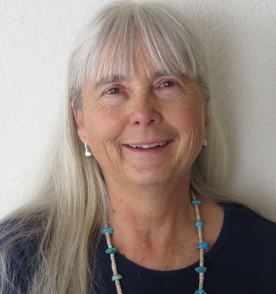 Nancy writes award-winning historical fiction, too.Author Nancy Oswald was struck by Wynkoop's integrity and courage, and his humanness. "At times he was quite full of himself and acted rashly. But he also had the gift of gab which pulled his fat out of the fire more than once. He wasn’t afraid to stand up for what he believed in and was a man of action."
Nancy writes award-winning historical fiction, too.Author Nancy Oswald was struck by Wynkoop's integrity and courage, and his humanness. "At times he was quite full of himself and acted rashly. But he also had the gift of gab which pulled his fat out of the fire more than once. He wasn’t afraid to stand up for what he believed in and was a man of action."
Nancy graciously agreed to give us a peek into her Wynkoop biography, a recent winner of the Spur Award from the Western Writers of America .
Immediately before the massacre, Wynkoop was relieved from his command at Fort Lyon and told to report to his superior to explain the help he had given the Indians camped near Fort Lyon. After the massacre, and after convincing officials of wrongdoings, Wynkoop collected testimonies for the investigations of the massacre that would take place early in 1865. The atrocities committed at Sand Creek were both grisly and graphic. Despite the fact that Chivington (shown above) was found guilty of unnecessary brutality, he had mustered out of the military without punishment.
Wynkoop became very unpopular. He was called an Indian lover and the “most hated man in Colorado.” He stood firm, remaining true to his beliefs. After retiring from the military, Wynkoop helped to negotiate treaties with the Plains Indians and fought for them when annuities were not delivered on time. Often Wynkoop secured and delivered the rations himself, and he acted as a go-between when terms of the treaties were breached. Wynkoop became known as one of the few white men the Plains Indians trusted.
In 1864, Edward WynKoop's work for peace came to nothing. But his courage to sit down and talk with the enemy gives me hope. If a guy could do it then, surely we can find a way toward creating more peace in our world today. Any ideas? Can we individually make a difference?
Warning: It's violent, gory and horrific, but one man had the courage to try to prevent the slaughter. And in that, I find hope.
The attack in Colorado Territory came at dawn November 29, 1864. Indian villagers likely heard the pounding hooves before they saw the hundreds of blue-clad cavalrymen.
 Artist Robert Lindneaux portrays his concept of the Sand Creek Massacre. Courtesty History Colorado #46619A Cheyenne chief raised the Stars and Stripes above his lodge. Others in the village of about 1000-people waved white flags. The troops responded with rifle and cannon fire.
Artist Robert Lindneaux portrays his concept of the Sand Creek Massacre. Courtesty History Colorado #46619A Cheyenne chief raised the Stars and Stripes above his lodge. Others in the village of about 1000-people waved white flags. The troops responded with rifle and cannon fire.Witnesses say some two hundred people died, warriors trying to fight back with bows and arrows, others shot down as they tried to flee. Two-thirds of the dead and mutilated bodies left on the ground were women and children. Boasting of his victory Col. Chivington paraded the body parts of dead Cheyenne and Arapaho through the streets of Denver.
 A new award-winning book tells how Edward Wynkoop risked his life to meet with hostile Indians and negotiate peace in Colorado Territory.
A new award-winning book tells how Edward Wynkoop risked his life to meet with hostile Indians and negotiate peace in Colorado Territory. Unfortunately, that peace never had a chance, due to prevailing attitudes of the times.
"Damn any man who sympathizes with Indians! . . . . I have come to kill Indians, and believe it is right and honorable to use any means under God's heaven to kill Indians." -Colonel John Milton Chivington, U.S. Army.
The bloodshed and betrayal at Sand Creek created intense mistrust among Plains Indians and hardened their resolve to resist white expansion. Warfare continued until another infamous massacre in 1890 at Wounded Knee extinguished the Indian's struggle. Repercussions from Sand Creek echo across the centuries impacting Native American culture and lives to the present day.
 Black Kettle (seated center) and other Cheyenne chiefs conclude successful peace talks with Major Edward W. Wynkoop (kneeling with hat) at Fort Weld, Colorado, in September, 1864. Photo Courtesy National Archives.
Black Kettle (seated center) and other Cheyenne chiefs conclude successful peace talks with Major Edward W. Wynkoop (kneeling with hat) at Fort Weld, Colorado, in September, 1864. Photo Courtesy National Archives.Based on the promises made at this meeting, Black Kettle led his band back to the Sand Creek reservation, where they were massacred in late November. Read an eyewitness account in this article from the Smithsonian Magazine...
Wynkoop biography
for young readers
wins
Spur Award
 Nancy writes award-winning historical fiction, too.Author Nancy Oswald was struck by Wynkoop's integrity and courage, and his humanness. "At times he was quite full of himself and acted rashly. But he also had the gift of gab which pulled his fat out of the fire more than once. He wasn’t afraid to stand up for what he believed in and was a man of action."
Nancy writes award-winning historical fiction, too.Author Nancy Oswald was struck by Wynkoop's integrity and courage, and his humanness. "At times he was quite full of himself and acted rashly. But he also had the gift of gab which pulled his fat out of the fire more than once. He wasn’t afraid to stand up for what he believed in and was a man of action."Nancy graciously agreed to give us a peek into her Wynkoop biography, a recent winner of the Spur Award from the Western Writers of America .
Immediately before the massacre, Wynkoop was relieved from his command at Fort Lyon and told to report to his superior to explain the help he had given the Indians camped near Fort Lyon. After the massacre, and after convincing officials of wrongdoings, Wynkoop collected testimonies for the investigations of the massacre that would take place early in 1865. The atrocities committed at Sand Creek were both grisly and graphic. Despite the fact that Chivington (shown above) was found guilty of unnecessary brutality, he had mustered out of the military without punishment.
Wynkoop became very unpopular. He was called an Indian lover and the “most hated man in Colorado.” He stood firm, remaining true to his beliefs. After retiring from the military, Wynkoop helped to negotiate treaties with the Plains Indians and fought for them when annuities were not delivered on time. Often Wynkoop secured and delivered the rations himself, and he acted as a go-between when terms of the treaties were breached. Wynkoop became known as one of the few white men the Plains Indians trusted.
In 1864, Edward WynKoop's work for peace came to nothing. But his courage to sit down and talk with the enemy gives me hope. If a guy could do it then, surely we can find a way toward creating more peace in our world today. Any ideas? Can we individually make a difference?
Published on June 12, 2015 00:01
June 5, 2015
They Said Women Were Unsuited To Combat--But They Didn't Know This Story!
More than a century before women were officially allowed to serve in combat positions in the U.S. Army...
It was June 1863. Union forces had just suffered their worst defeat yet at the hands of the Confederates and Robert E. Lee at the First Battle of the Wilderness.
Northerners needed a boost and they gained both military and psychological momentum when James Montgomery and 300 men of the Second South Carolina Black regiment and the Third Rhode Island Battery pulled off the Combahee Raid near Beaufort, South Carolina.
Who was the woman who supplied the intelligence for the raid and directed the Colonel and his men? Courtesy Harper's Magazine Nearly every school kid learns about Harriet Tubman, her escape from slavery and her work on the Underground Railroad.
Courtesy Harper's Magazine Nearly every school kid learns about Harriet Tubman, her escape from slavery and her work on the Underground Railroad.  Nurse, cook, scout, and spy---Harriet did it all for the Union army. On the night of June 2, 1863 she led the force that wrecked havoc on Confederate holdings on both sides of the river and emboldened more than 700 slaves to desert their plantations and flee to freedom.
Nurse, cook, scout, and spy---Harriet did it all for the Union army. On the night of June 2, 1863 she led the force that wrecked havoc on Confederate holdings on both sides of the river and emboldened more than 700 slaves to desert their plantations and flee to freedom.
At the appearance of Union gunboats coming up the river "...overseers used their whips in vain, for they failed to drive the slaves back to the quarters. They turned and ran for the gun-boats; they came down every road, across every field, dressed just as they were when they left their work and their cabins. There were women with children clinging around their necks, hanging onto their dresses, or running behind, but all rushed at full speed for “Lincoln’s gun-boats.” Hundred crowded the banks, with their hands extended toward their deliverers, and most of them were taken aboard the gun-boats to be carried to Beaufort." Quote thanks to www.harriettubman.com/tubman2.html.
A Boston newspaper reporting the event mentioned Colonel Montgomery later gave a speech, which was followed by words from "the black woman who led the raid....For sound sense and real native eloquence, her address would do honor to any man, and it created a great sensation... "
The story ends on a further unfortunate note. Harriet Tubman was paid a mere $200 for her service to the Union Army over the course of the war, and was refused veteran's benefits. Though she received benefits as the wife of a veteran, she died in poverty.
...a woman planned and executed an armed raid into enemy territory.She guided a force of three gunboats upriver to rout enemy outposts, destroy stockpiles of supplies and weapons, and free hundreds of captives.
It was June 1863. Union forces had just suffered their worst defeat yet at the hands of the Confederates and Robert E. Lee at the First Battle of the Wilderness.
Northerners needed a boost and they gained both military and psychological momentum when James Montgomery and 300 men of the Second South Carolina Black regiment and the Third Rhode Island Battery pulled off the Combahee Raid near Beaufort, South Carolina.
Who was the woman who supplied the intelligence for the raid and directed the Colonel and his men?
 Courtesy Harper's Magazine Nearly every school kid learns about Harriet Tubman, her escape from slavery and her work on the Underground Railroad.
Courtesy Harper's Magazine Nearly every school kid learns about Harriet Tubman, her escape from slavery and her work on the Underground Railroad. Less often they hear how this amazing woman, barely five feet tall, was the first American woman to lead an armed mission behind enemy lines.
 Nurse, cook, scout, and spy---Harriet did it all for the Union army. On the night of June 2, 1863 she led the force that wrecked havoc on Confederate holdings on both sides of the river and emboldened more than 700 slaves to desert their plantations and flee to freedom.
Nurse, cook, scout, and spy---Harriet did it all for the Union army. On the night of June 2, 1863 she led the force that wrecked havoc on Confederate holdings on both sides of the river and emboldened more than 700 slaves to desert their plantations and flee to freedom.At the appearance of Union gunboats coming up the river "...overseers used their whips in vain, for they failed to drive the slaves back to the quarters. They turned and ran for the gun-boats; they came down every road, across every field, dressed just as they were when they left their work and their cabins. There were women with children clinging around their necks, hanging onto their dresses, or running behind, but all rushed at full speed for “Lincoln’s gun-boats.” Hundred crowded the banks, with their hands extended toward their deliverers, and most of them were taken aboard the gun-boats to be carried to Beaufort." Quote thanks to www.harriettubman.com/tubman2.html.
A Boston newspaper reporting the event mentioned Colonel Montgomery later gave a speech, which was followed by words from "the black woman who led the raid....For sound sense and real native eloquence, her address would do honor to any man, and it created a great sensation... "
The story ends on a further unfortunate note. Harriet Tubman was paid a mere $200 for her service to the Union Army over the course of the war, and was refused veteran's benefits. Though she received benefits as the wife of a veteran, she died in poverty.
Published on June 05, 2015 00:00
June 05th, 2015
More than a century before women were officially allowed to serve in combat positions in the U.S. Army...
It was June 1863. Union forces had just suffered their worst defeat yet at the hands of the Confederates and Robert E. Lee at the First Battle of the Wilderness.
Northerners needed a boost and they gained both military and psychological momentum when James Montgomery and 300 men of the Second South Carolina Black regiment and the Third Rhode Island Battery pulled off the Combahee Raid near Beaufort, South Carolina.
Who was the woman who supplied the intelligence for the raid and directed the Colonel and his men? Courtesy Harper's Magazine Nearly every school kid learns about Harriet Tubman, her escape from slavery and her work on the Underground Railroad.
Courtesy Harper's Magazine Nearly every school kid learns about Harriet Tubman, her escape from slavery and her work on the Underground Railroad.  Nurse, cook, scout, and spy---Harriet did it all for the Union army. On the night of June 2, 1863 she led the force that wrecked havoc on Confederate holdings on both sides of the river and emboldened more than 700 slaves to desert their plantations and flee to freedom.
Nurse, cook, scout, and spy---Harriet did it all for the Union army. On the night of June 2, 1863 she led the force that wrecked havoc on Confederate holdings on both sides of the river and emboldened more than 700 slaves to desert their plantations and flee to freedom.
At the appearance of Union gunboats coming up the river "...overseers used their whips in vain, for they failed to drive the slaves back to the quarters. They turned and ran for the gun-boats; they came down every road, across every field, dressed just as they were when they left their work and their cabins. There were women with children clinging around their necks, hanging onto their dresses, or running behind, but all rushed at full speed for “Lincoln’s gun-boats.” Hundred crowded the banks, with their hands extended toward their deliverers, and most of them were taken aboard the gun-boats to be carried to Beaufort." Quote thanks to www.harriettubman.com/tubman2.html.
A Boston newspaper reporting the event mentioned Colonel Montgomery later gave a speech, which was followed by words from "the black woman who led the raid....For sound sense and real native eloquence, her address would do honor to any man, and it created a great sensation... "
The story ends on a further unfortunate note. Harriet Tubman was paid a mere $200 for her service to the Union Army over the course of the war, and was refused veteran's benefits. Though she received benefits as the wife of a veteran, she died in poverty.
...a woman planned and executed an armed raid into enemy territory.She guided a force of three gunboats upriver to rout enemy outposts, destroy stockpiles of supplies and weapons, and free hundreds of captives.
It was June 1863. Union forces had just suffered their worst defeat yet at the hands of the Confederates and Robert E. Lee at the First Battle of the Wilderness.
Northerners needed a boost and they gained both military and psychological momentum when James Montgomery and 300 men of the Second South Carolina Black regiment and the Third Rhode Island Battery pulled off the Combahee Raid near Beaufort, South Carolina.
Who was the woman who supplied the intelligence for the raid and directed the Colonel and his men?
 Courtesy Harper's Magazine Nearly every school kid learns about Harriet Tubman, her escape from slavery and her work on the Underground Railroad.
Courtesy Harper's Magazine Nearly every school kid learns about Harriet Tubman, her escape from slavery and her work on the Underground Railroad. Less often they hear how this amazing woman, barely five feet tall, was the first American woman to lead an armed mission behind enemy lines.
 Nurse, cook, scout, and spy---Harriet did it all for the Union army. On the night of June 2, 1863 she led the force that wrecked havoc on Confederate holdings on both sides of the river and emboldened more than 700 slaves to desert their plantations and flee to freedom.
Nurse, cook, scout, and spy---Harriet did it all for the Union army. On the night of June 2, 1863 she led the force that wrecked havoc on Confederate holdings on both sides of the river and emboldened more than 700 slaves to desert their plantations and flee to freedom.At the appearance of Union gunboats coming up the river "...overseers used their whips in vain, for they failed to drive the slaves back to the quarters. They turned and ran for the gun-boats; they came down every road, across every field, dressed just as they were when they left their work and their cabins. There were women with children clinging around their necks, hanging onto their dresses, or running behind, but all rushed at full speed for “Lincoln’s gun-boats.” Hundred crowded the banks, with their hands extended toward their deliverers, and most of them were taken aboard the gun-boats to be carried to Beaufort." Quote thanks to www.harriettubman.com/tubman2.html.
A Boston newspaper reporting the event mentioned Colonel Montgomery later gave a speech, which was followed by words from "the black woman who led the raid....For sound sense and real native eloquence, her address would do honor to any man, and it created a great sensation... "
The story ends on a further unfortunate note. Harriet Tubman was paid a mere $200 for her service to the Union Army over the course of the war, and was refused veteran's benefits. Though she received benefits as the wife of a veteran, she died in poverty.
Published on June 05, 2015 00:00
May 28, 2015
Through Hell to Mercy: One Woman's Journey
Last week I told you about Joy Kogawa, a Canadian Japanese
woman whose family was torn apart and interned during WWII
. The family's home in Vancouver, British Columbia was confiscated and sold without their permission, as were their possessions.

Above, Joy and her brother stand near the home the Canadian government ripped away from them. When the war ended, Japanese Canadians were not allowed to go back to Vancouver. They were given the choice of being deported to war ravaged Japan, or shipped east of the Rocky Mountains to Canada's inland provinces.
Joy and her brother were hauled over the Rockies to Southern Alberta, where they were put to work on a sugar beet farm.
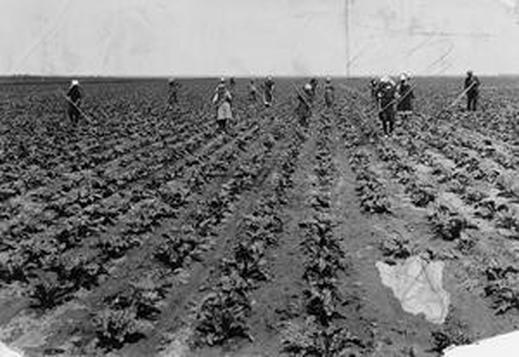 They had to weed fields like these shown in the photo three times a year, and then harvest the beets. For five years, through blistering summers and freezing winters, the children, an aunt and an uncle lived in a one-room hut on a remote farm on the Alberta prairie.
They had to weed fields like these shown in the photo three times a year, and then harvest the beets. For five years, through blistering summers and freezing winters, the children, an aunt and an uncle lived in a one-room hut on a remote farm on the Alberta prairie.
When Japan bombed Pearl Harbor, Jo's mother and maternal grandmother were visiting relatives in Japan. Jo never heard from her mother again. Not until she was an adult did she learn her mother died after suffering terrible burns when Nagasaki was hit by the atomic bomb. Jo's father had died an early death in the internment hospital during the war. How does one build a life from the shambles of a family staggering under the anguish of such bitter injustice?
How does one build a life from the shambles of a family staggering under the anguish of such bitter injustice?
The Canadian government and many citizens refused to acknowledge the wrong done to Japanese Canadians, but Joy realized the silence had gone on long enough.
As Joy reflected on her experiences she began to write her novel Obasan , named for the aunt who cared for her during the internment and her teenage years. She mentioned two ideas in the book, which I believe helped her move beyond the evils that had happened to her.
One she describes through the metaphor of remembering her grandfather’s woodworking. ““I can feel the outline of the plane with a wooden handle which he worked by pulling it towards him. There is a fundamental difference in Japanese workmanship-- to pull with control rather than push with force .”
Another insight comes from the Japanese ideograph for “love” which contains the root words heart, hand and action.
The power of story also gives Joy courage. Writing her novel of one woman’s brokenness and journey toward healing brings not only helps mend her own heart, but harnesses the power of narrative to shine a light on history and move people to try and right the wrongs.At last report, Joy Kogawa was working on a memoir entitled Gently, to Nagasaki. She says this project is the hardest thing she has ever done because she has had to "go to her personal hell" in search of mercy.
Mercy is necessary, Joy says, because so many people in the world live with a constricted fearful heart. They live with a scarcity mindset. Mercy moves us to an abundance mindset. For a longer interview with Joy Kogawa, click here...
I've been struck by so many pieces of this story. I love the idea that action is integral to love. I'm pondering how Joy uses the word "mercy" where others might use "forgiveness." I'm wondering if I can have a mindset of abundance when I start to feel I don't have enough time in my day. What do you think?
I'd love to hear your thoughts on this story. Leave you comments below.

Above, Joy and her brother stand near the home the Canadian government ripped away from them. When the war ended, Japanese Canadians were not allowed to go back to Vancouver. They were given the choice of being deported to war ravaged Japan, or shipped east of the Rocky Mountains to Canada's inland provinces.
Joy and her brother were hauled over the Rockies to Southern Alberta, where they were put to work on a sugar beet farm.
What I didn't
tell you about is
Joy's courage to heal after the hurt
and outrage
of such an irreparable injustice.
 They had to weed fields like these shown in the photo three times a year, and then harvest the beets. For five years, through blistering summers and freezing winters, the children, an aunt and an uncle lived in a one-room hut on a remote farm on the Alberta prairie.
They had to weed fields like these shown in the photo three times a year, and then harvest the beets. For five years, through blistering summers and freezing winters, the children, an aunt and an uncle lived in a one-room hut on a remote farm on the Alberta prairie. When Japan bombed Pearl Harbor, Jo's mother and maternal grandmother were visiting relatives in Japan. Jo never heard from her mother again. Not until she was an adult did she learn her mother died after suffering terrible burns when Nagasaki was hit by the atomic bomb. Jo's father had died an early death in the internment hospital during the war.
How does one recover after loosing nearly everyone
and
everything?
 How does one build a life from the shambles of a family staggering under the anguish of such bitter injustice?
How does one build a life from the shambles of a family staggering under the anguish of such bitter injustice?
The Canadian government and many citizens refused to acknowledge the wrong done to Japanese Canadians, but Joy realized the silence had gone on long enough.
As Joy reflected on her experiences she began to write her novel Obasan , named for the aunt who cared for her during the internment and her teenage years. She mentioned two ideas in the book, which I believe helped her move beyond the evils that had happened to her.
One she describes through the metaphor of remembering her grandfather’s woodworking. ““I can feel the outline of the plane with a wooden handle which he worked by pulling it towards him. There is a fundamental difference in Japanese workmanship-- to pull with control rather than push with force .”
Another insight comes from the Japanese ideograph for “love” which contains the root words heart, hand and action.
The power of story also gives Joy courage. Writing her novel of one woman’s brokenness and journey toward healing brings not only helps mend her own heart, but harnesses the power of narrative to shine a light on history and move people to try and right the wrongs.At last report, Joy Kogawa was working on a memoir entitled Gently, to Nagasaki. She says this project is the hardest thing she has ever done because she has had to "go to her personal hell" in search of mercy.
Mercy is necessary, Joy says, because so many people in the world live with a constricted fearful heart. They live with a scarcity mindset. Mercy moves us to an abundance mindset. For a longer interview with Joy Kogawa, click here...
I've been struck by so many pieces of this story. I love the idea that action is integral to love. I'm pondering how Joy uses the word "mercy" where others might use "forgiveness." I'm wondering if I can have a mindset of abundance when I start to feel I don't have enough time in my day. What do you think?
I'd love to hear your thoughts on this story. Leave you comments below.
Published on May 28, 2015 16:48
May 21, 2015
From Some Nightmares, there is No Waking

Canadians have a great reputation. In fact, for three of the last four years running the Reputation Institute reports Canada has been the most beloved country in the world.
Maybe that's why it was such a shock when I discovered Canada, like the United States, treated its Japanese citizens so shamefully during World War II.
Reading a novel based on these events, I nearly had to put it down, it was so awful . But as is often true, I found the story of a woman who survived horrible hardship and injustice, and somehow spun straw into gold.
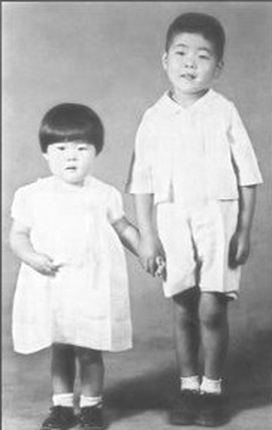 Following Pearl Harbor, racist fear and resentment exploded against Japanese Canadians in British Columbia.
Following Pearl Harbor, racist fear and resentment exploded against Japanese Canadians in British Columbia."It is the government's plan to get these people out of B.C. as fast as possible," said Cabinet Minister Ian MacKenzie. "It is my personal intention, as long as I remain in public life, to see they never come back here. Let our slogan be... No Japs from the Rockies to the seas. "
Six-year-old Joy Kogawa and her brother were separated from their father and grandparents and herded onto a train with an aunt & uncle. The train carried them to Slocan City, a long played-out silver mining town in the foothills of the B.C. Rockies.
Joy choose one doll to take with her. The outcasts were allowed only what they could carry to build a life in a two room shack with no plumbing or electricity. The family's home in Vancouver, BC and all it’s furnishings were confiscated and later sold for a tenth of their value.
 Thanks to George Fukuhara for photo. Many women, children and elderly were rounded up and housed for months in an over-crowded livestock exhibition building, before being shipped off to shanty towns and internment camps.
Thanks to George Fukuhara for photo. Many women, children and elderly were rounded up and housed for months in an over-crowded livestock exhibition building, before being shipped off to shanty towns and internment camps.At right, Fumiko Fukuhara with two of her children in front of their tar-paper shack near Tappin B.C. Nearly starving the winter of 1942-43, they found a farmer, Henry Calhoun farm willing to give them work on his vegetable farm. Royal Canadian Mounted Police yanked men away from their livelihood, fishing boats and gear confiscated, their life on the temperate coast exchanged for the harsh conditions of inland roadwork camps.
Twelve-hundred fishing boats were taken from Japanese Canadians.
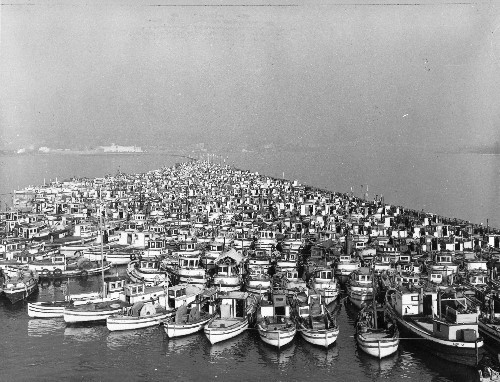 Japanese Canadian Cultural Centre Archives. After WWII, Joy and her family hoped to return to their home and life in Vancouver where her father had been a doctor.
Japanese Canadian Cultural Centre Archives. After WWII, Joy and her family hoped to return to their home and life in Vancouver where her father had been a doctor.Instead they were hauled even further from home, over the Rocky Mountains to a sugar beet farm near Lethbridge, Alberta. They lived in a one-room hut with their aunt & uncle, toiled in the beet fields during the blazing summers and traded places near the stove during the freezing winters.
Joy Kogawa wrote a novelized version of her experiences during this time. In Obasan, she speaks of those years on the sugar beet farm.
“The fact is, I never got used to it, and I cannot. I cannot bear the memories. There are some nightmares from which there is no waking.”
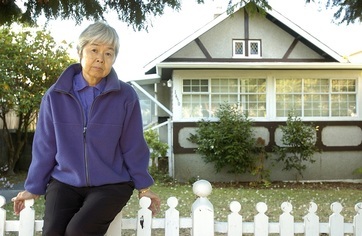 Photo thanks to Dan Toulgoet, Vancouver Courier But the nightmare grew even worse. Years later, Joy discovered her mother, who had been visiting Japan when the war broke out, was in Nagasaki when the U.S. bombed the city.
Photo thanks to Dan Toulgoet, Vancouver Courier But the nightmare grew even worse. Years later, Joy discovered her mother, who had been visiting Japan when the war broke out, was in Nagasaki when the U.S. bombed the city. Next week,
I'll tell you about Joy's journey through "personal hell" to find mercy.
Her novel Obasan is now required reading in many schools across Canada, and has been called one of the country's all-time best 100 books.
Published on May 21, 2015 21:06



